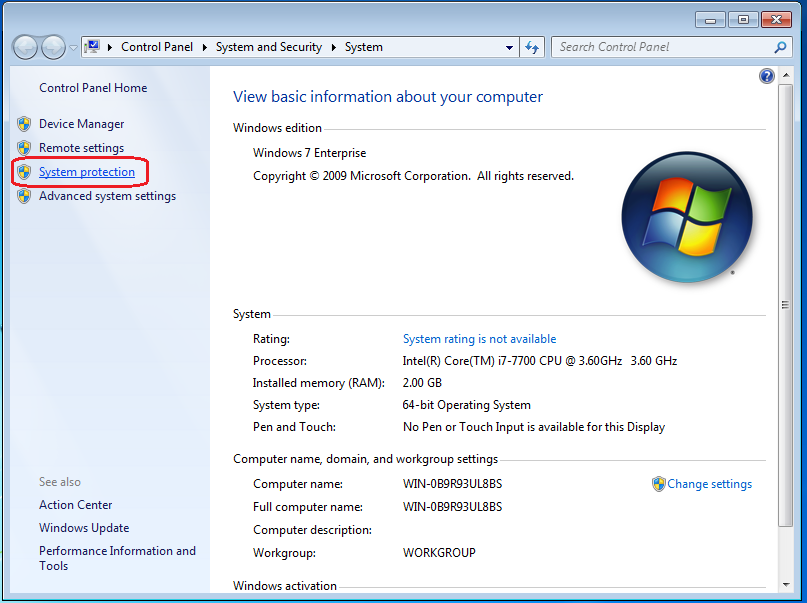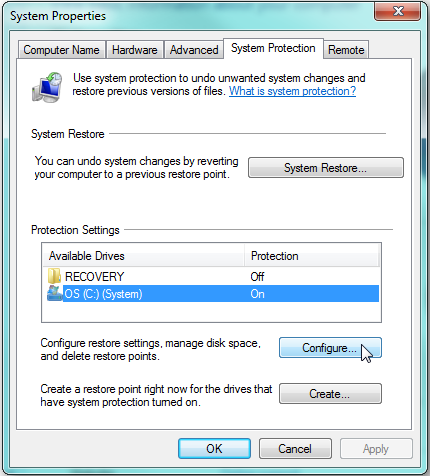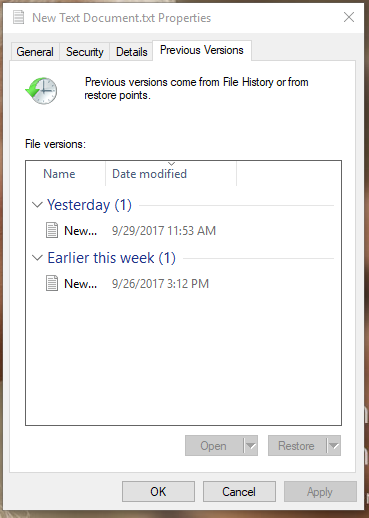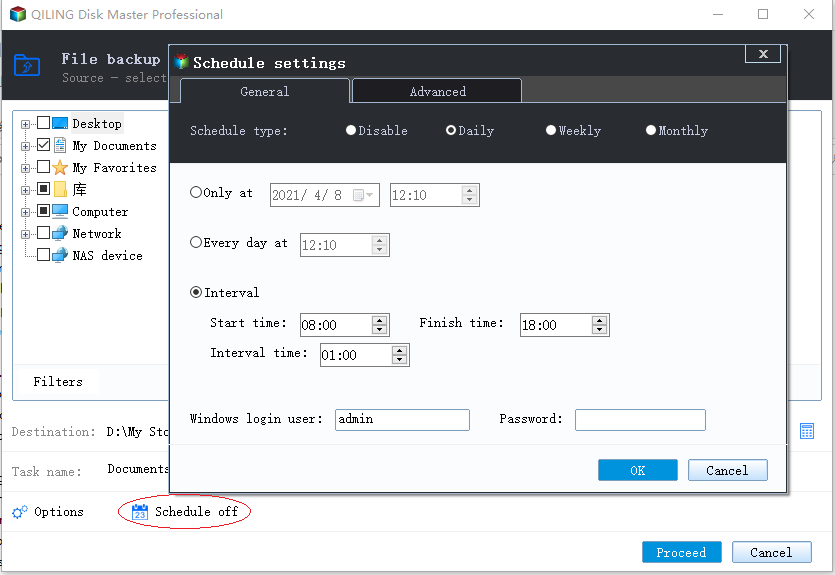How to Make the Best Use of Windows 10 Previous Versions
What is Windows 10 Previous Versions?
Windows 10/8/7's Previous Versions feature is a useful tool that allows you to restore files to their previous state, view and restore earlier versions, and even recover deleted files. However, sometimes no previous versions may be available, and this article provides information on this feature and why it may not work as expected.
How to configure Windows 10 previous versions
In Windows 10, you can use Previous Versions to restore files from File History or System Restore Points. This feature allows you to revert to a previous version of a file or folder that was saved when you had either of these backup systems set up.
Previous versions via File History
File History allows you to backup files to removable drives or network drives, but not to internal drives.
To File History in Windows 10,
1. you can click Start and select Settings.
2. Then navigate to Update & Security > Backup.
3. To add a drive, click on the "Add a drive" option under the "Back up" tab.
To back up your computer, you can use File History to save all your backups on an external drive, or create a shared folder on an internal drive and use it as a network drive to trick File History into backing up to the internal drive.
Windows 10 has OneDrive built-in, allowing users to map OneDrive as a network drive and use it as a backup destination for File History.
Previous version via Restore Points
System Restore Points save important system files, allowing you to restore your computer to a previous date, including files, apps, registry, and system settings.
To configure System Restore Points settings:
1. To access System Protection, right-click on "This PC" and select Properties, then click on System Protection.
2. To enable restore points and select the drives to protect, click the "Configure" button under the System Protection tab, and then choose one or more drives containing the files you want to safeguard.
In Windows 10, you can either manually create a restore point by clicking "Create…" or let Windows automatically create them at certain intervals, such as when a new Windows update is installed or a new program is installed, or when 7 days pass without any restore points being created.
If you're not satisfied with the frequency at which Windows creates restore points, you can modify or add triggers using the Task Scheduler. To do this, open the Task Scheduler by typing "taskschd.msc" in a Run window, then navigate to Library > Microsoft > Windows > System Restore. From there, you can adjust the restore point task.
How to restore previous versions
To restore a file to its previous version, locate the file, right-click on it, select Properties, and go to the Previous Versions tab, where you can view or restore a saved version from File History or restore points.
Why is Windows 10 previous versions not working
If Windows 10 Previous Versions doesn't appear, it's likely because neither restore points nor File History backups have been created. To confirm, check if File History and System Protection settings are well configured. If so, Previous Versions should be available, allowing you to restore files from previous versions. If not, you may need to create restore points or enable File History to access Previous Versions.
In Windows 10, System Restore Points are disabled by default, and major updates may also disable them. To avoid this, you can customize the system restore points frequency using Task Scheduler, ensuring that system restore points are created at a frequency that suits your needs.
Previous Versions cannot replace file backup
File History only protects personal files, including user libraries, desktop, favorites, and contacts, leaving system files unprotected. Restore points record system files, but saved previous versions are stored on the same volume, making them vulnerable to data loss if the volume fails.
To be more flexible in choosing what files to backup, you can create image backups, which allows you to backup entire partitions, systems, or disks, in addition to file backup, cloud backup, partition backup, system backup, or disk backup.
For a reliable backup tool, Qiling Disk Master Standard free is recommended. It's faster, more secure, and offers more customizable backup options compared to Windows Backup and Restore.
Let's take file image backup as an example:
1. Free download this free backup software, install and launch it.
2. Under the "Backup" tab, choose "File Backup".
Tip: In Windows 10, you can backup specific files or use the Cloud Backup feature, which allows you to backup files to Qiling Cloud and enjoy 1TB free storage for 15 days after registering a Qiling account.
3. In this screen, click "Files" or "Folder" to specify what you want to backup. You can also create a filter to exclude files from the backup, an option available in �iling Disk Master Professional version.Qiling Disk Master Professional version.
4. You can specify a location to receive the image backup, such as an external drive, network drive, cloud drive, or internal drive.
5. To run a backup automatically, click "Schedule" to set a scheduled backup, then click "Proceed" to initiate the backup.
When the backup is complete, you can create a bootable media, such as a USB drive or CD/DVD, which can be used to restore your data if your system is unable to boot normally.
Your system and files are vulnerable to threats like viruses, hard drive failures, and system crashes, even with Windows 10 Previous Versions configured. To protect yourself, create an image backup to safeguard your system and files.
To protect unlimited computers within your company, you can opt for Qiling Disk Master Technician, which comes with the Qiling Image Deploy tool. This tool allows you to deploy or restore system image files on server-side computers to multiple client-side computers over a network.
Related Articles
- How to Create System Restore Points in Windows 7 like a Pro
If you don't know how to create a system restore point in Windows 7, continue to read below and learn 2 practical methods as well as how to use it. - Fix: File History Doesn’t Recognize This Drive
Have you encountered a message saying "File History doesn't recognise this drive" when using it to back up files to an external drive in Windows 11, 10, 8? Here are how to solve it. - How to Automatically Backup File Using Task Scheduler?
Task Scheduler is a built-in Windows features with multiple options to trigger a task. Learn 3 ways to backup file using Task Scheduler. - 3 Reliable DBAN Alternatives to Completely Wipe Hard Drive
Are you looking for a DBAN alternative to wipe a hard drive completely? You could try Diskpart, Disk Management, or Qiling Disk Master Professional.






